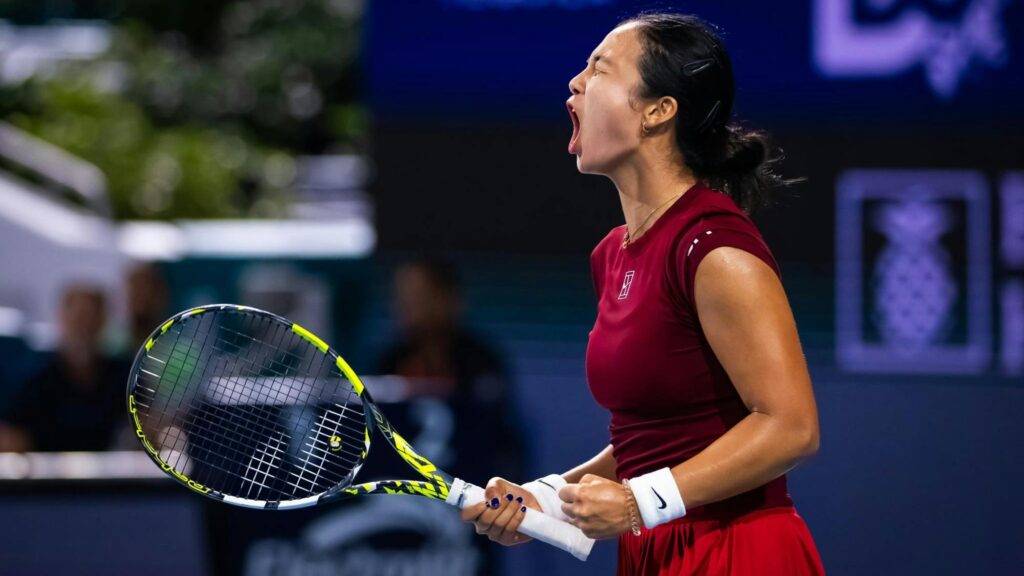In the heart of Paris, where legends are born and history is made on the red clay of Roland Garros, a new chapter in Filipino tennis began to write itself. Alexandra Eala, the 19-year-old prodigy from the Philippines, has officially stepped onto the grand stage — the Grand Slam stage — at the 2025 French Open. Her debut not only signals personal triumph, but also marks a seismic moment for Philippine tennis. With every powerful forehand and graceful drop shot, Eala is not just playing for herself — she’s playing for a nation.
This is more than a debut. It’s a declaration.
The Road to Roland Garros
The journey to Paris was neither easy nor conventional. For years, Alexandra Eala has danced between two worlds: the global junior circuit and the intense grind of professional women’s tennis. A former junior Grand Slam champion and a product of the Rafael Nadal Academy, Eala first lit up the tennis world with her poise under pressure and effortless shot-making — attributes that made her stand out even in her early teens.
From clay courts in Mallorca to hard courts in the U.S., Eala’s training ground has been as diverse as her style of play. She possesses a fluidity in her movement and a maturity in her shot selection that belies her age. Still, it took grit, growth, and grit again to break into the elite ranks of the sport.

Qualifying for a Grand Slam is no small feat. For players outside the top 100, it often means battling through three grueling rounds of qualifiers, where every opponent is hungrier than the next. This year, at Roland Garros, Eala not only passed that test — she aced it. In those intense three matches, she didn’t just survive; she showcased an arsenal of weapons: a cracking two-handed backhand, impressive court coverage, and above all, a composed head that refused to buckle under pressure.
Why This Debut Matters
Eala’s debut at Roland Garros is not just a personal milestone — it’s a cultural moment. The Philippines has never had a female tennis player go this far in the Open Era. Her entry into the Grand Slam main draw places her alongside historic trailblazers, not just in Philippine sports, but in Southeast Asian tennis at large.
For decades, tennis in the Philippines has been a niche sport — accessible to few and overshadowed by basketball and boxing. Eala’s success brings it into the national spotlight. She carries the hopes of young Filipino athletes who now, more than ever, can see a pathway from local courts in Manila to the clay courts of Paris.
Moreover, her presence on the Grand Slam stage shines a light on diversity in the sport. Tennis has long been dominated by athletes from the United States, Europe, and Australia. Eala’s emergence — a Filipina with global game — challenges that mold, adding a fresh voice to the chorus of global talent.
A Game Built for Clay
While many young players struggle to adapt to the demands of clay, Eala seems almost tailor-made for it. Her movement, balance, and baseline consistency thrive on slower surfaces. She’s not afraid to engage in long rallies, to build points brick by brick, or to slide into a wide forehand with the elegance of a flamenco dancer.
What makes her stand out is her mental toughness. On clay, patience is key, and Eala’s ability to stay composed even when the game stretches into hour-long duels is what gives her an edge. This isn’t about blasting winners or overwhelming opponents with power — it’s about thinking, grinding, and winning the war of attrition.
At Roland Garros, where battles can stretch for hours and the sun sets late over Court Suzanne-Lenglen, Eala’s style of play doesn’t just survive — it flourishes.
From Rafa’s Protégé to a Star of Her Own
The influence of the Rafael Nadal Academy in Eala’s development cannot be overstated. Since joining the elite training center in Mallorca, she has absorbed the core philosophies of the King of Clay himself — resilience, humility, and intensity.
From sparring with top-tier juniors to observing Nadal’s training rituals, Eala learned that greatness is built on discipline. Her all-court game and relentless work ethic echo the Spanish maestro’s approach. Yet, she’s no carbon copy. Eala has a flair of her own — her deceptive touch at the net, her ability to change pace, her fearless use of angles. She blends the classical with the contemporary.
Now, as she steps onto the same grounds where her mentor built his legacy, she’s ready to write her own.
The Weight and Wonder of Representation
Eala’s Roland Garros debut is layered with meaning. As the first Filipina to play in the main draw of a Grand Slam since the Open Era began, she’s not just breaking barriers — she’s shattering them. In a world still grappling with representation in elite sport, Eala is a symbol of progress.
But it’s not just about representation. It’s about redefinition.
She redefines what a Filipino athlete looks like on the global stage. She redefines tennis dreams for kids growing up in Quezon City, Cebu, or Davao. She redefines the pathway for future Southeast Asian talents who dare to dream beyond regional tournaments and SEA Games medals.
The Social Spark: A Star Beyond the Court
Eala is not just a sports figure — she’s a rising icon. On social media, her following is exploding. Young Filipinos, tennis fans across Asia, and global tennis enthusiasts are tuning in, not just for her game but for her story.
She speaks fluent English and Tagalog, engages fans with humor and humility, and shares snippets of life on the tour — whether it’s training routines, post-match reflections, or Filipino food cravings in foreign cities. She’s relatable and aspirational at once.
The social impact is massive. Every win lights up timelines. Every photo from Paris — be it with the Eiffel Tower or the Roland Garros locker room — becomes a moment for national celebration. Eala is trending not because of manufactured hype, but because of genuine inspiration.
What Comes Next?
Eala’s debut is only the beginning. Whether she makes a deep run or exits early, the statement has been made: she belongs.
But make no mistake — this isn’t a “one-and-done” player. Eala’s trajectory points upward. She’s young, hungry, and has already proven that she can handle the pressure of big matches. With the experience of this Grand Slam under her belt, expect her to return stronger — at Wimbledon, the US Open, and back again at Roland Garros.
In the coming months, the tennis calendar is packed. More WTA tournaments, more chances to climb the rankings, more opportunities to establish herself as not just a promising player, but a fixture in the top echelons of women’s tennis.

Final Thoughts: The Dawn of a New Era
Alexandra Eala’s Grand Slam debut at Roland Garros is more than a career milestone — it’s a cultural shift, a burst of light for Philippine sports, and a testament to what happens when talent meets determination, support, and belief.
She is part of a new generation of athletes who understand their power — on the court, on social media, and in society at large. She plays with fire, speaks with grace, and walks with purpose.
The clay may stain her shoes, but it won’t stop her stride.
As the cameras roll, as the crowds cheer, and as Paris bears witness to her first steps on tennis’ most storied court, the message is clear:
Alexandra Eala has arrived.
And this is just the beginning.


